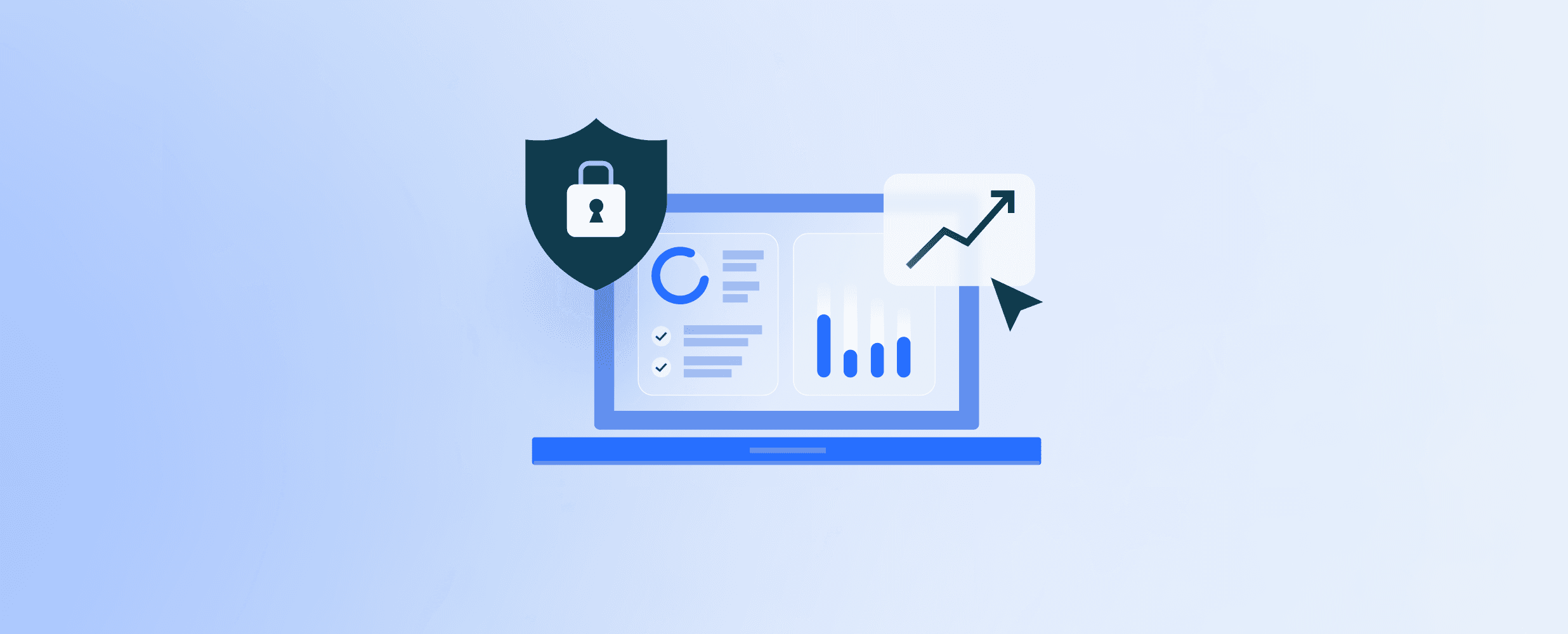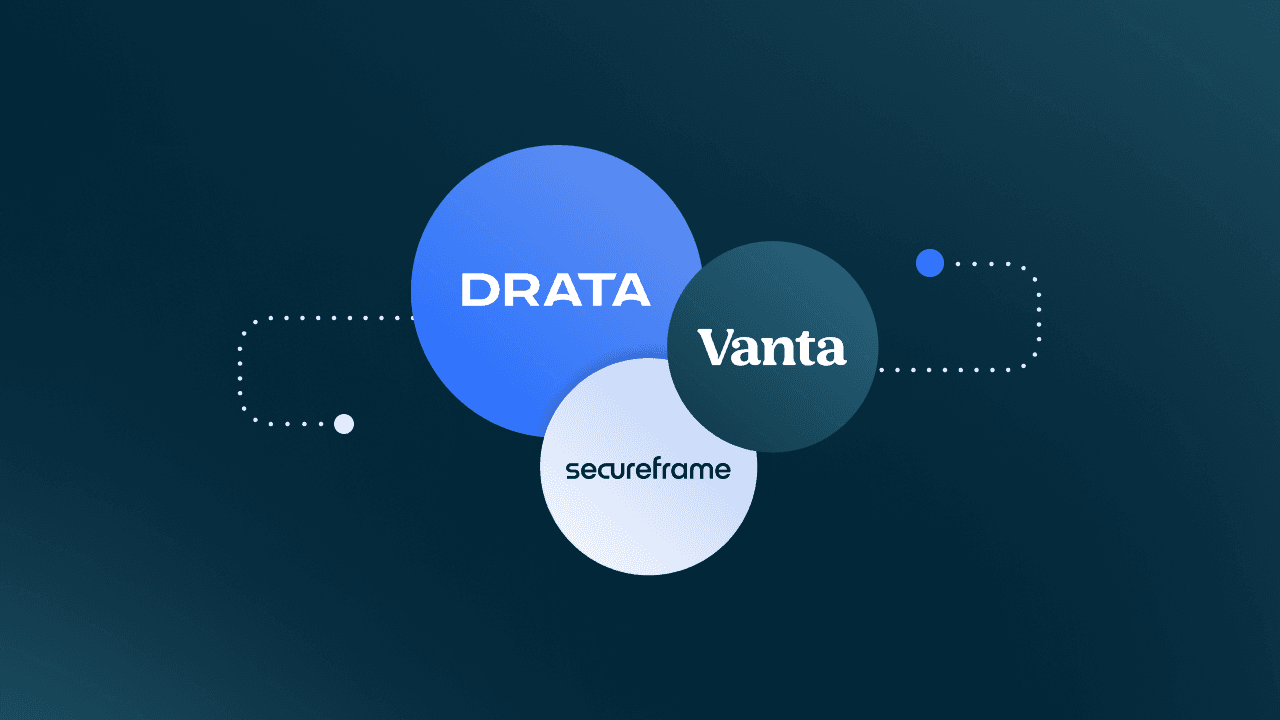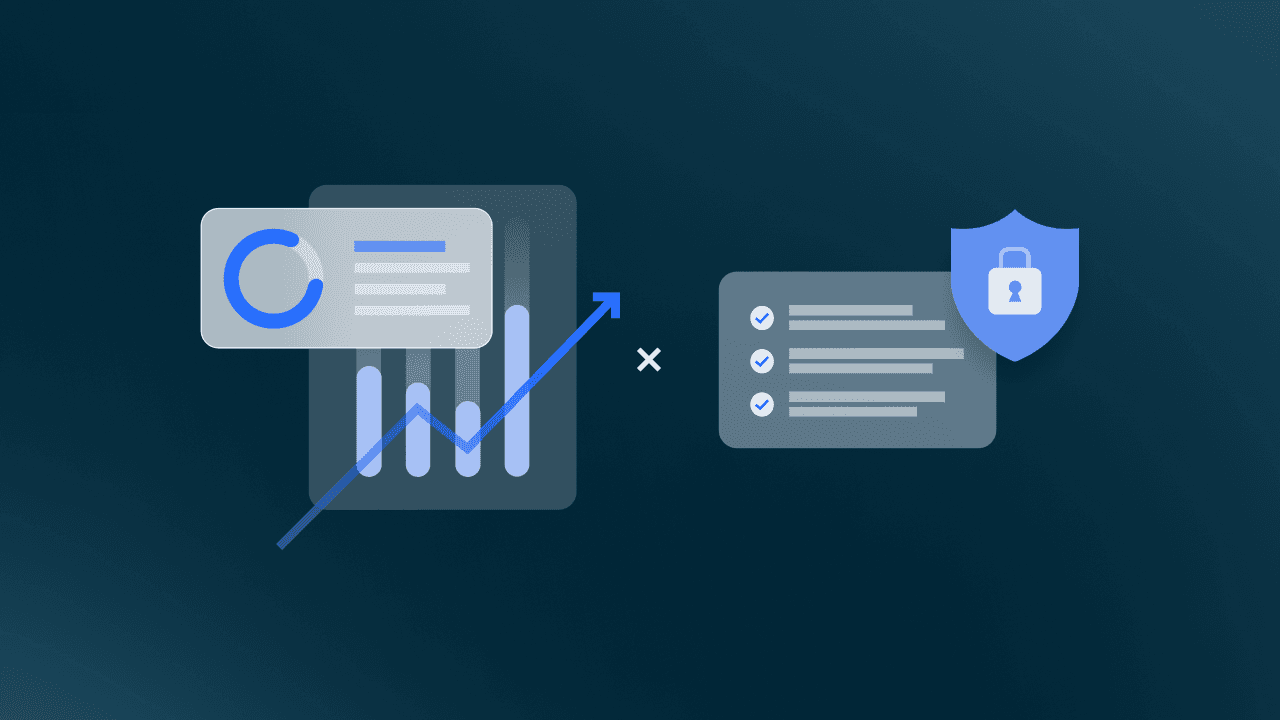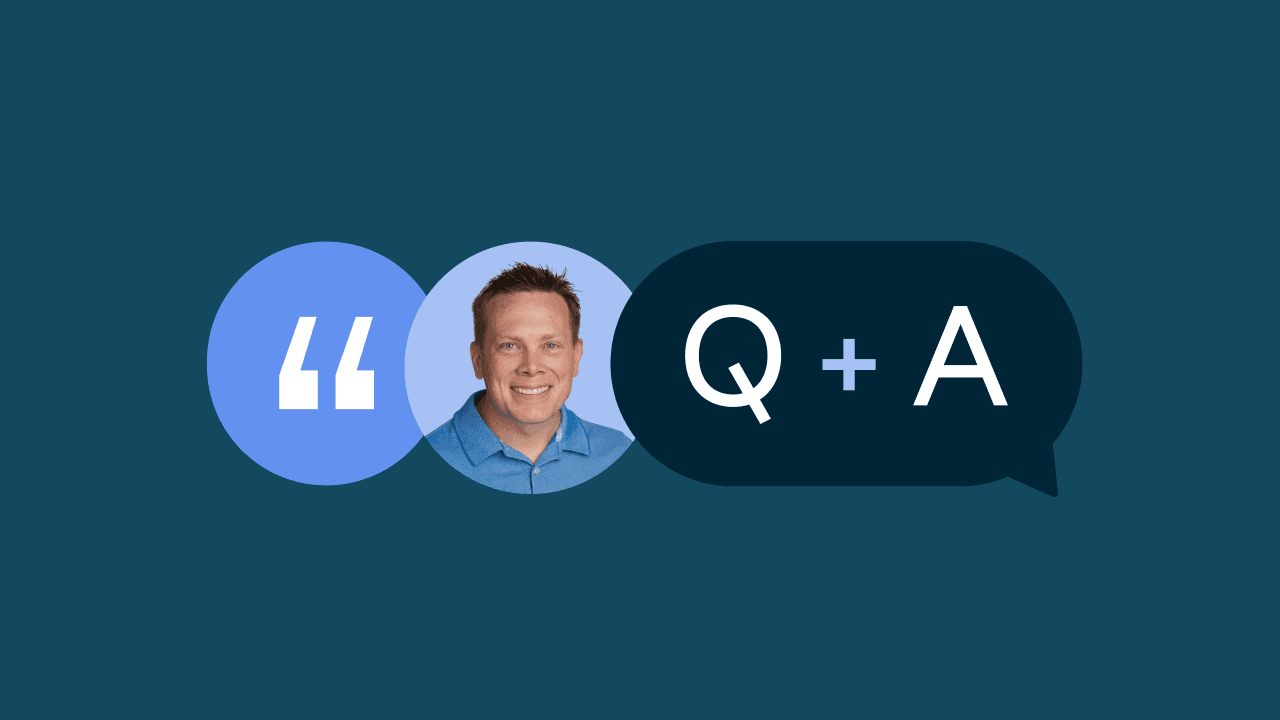The Rise of the Trust Management Platform
Trust management is a strategic approach that transparently communicates an organization’s compliance posture to provide security insights.
Trust is a loaded word in security. Across complicated, interconnected environments, one vendor’s security weakness can have a ripple effect across all their customers, creating an atmosphere of skepticism between business partners. According to Arctic Wolf’s report “The State of Cybersecurity: 2024 Trends Report,” only 66% of organizations that positively identified a data breach in the previous 12 months chose to publicly disclose information regarding the breach. As data breaches continue to diminish trust between vendors and customers, businesses increasingly support their security team’s zero trust motto of “never trust, always verify.”
In these conditions, compliance has become more important to building stronger business relationships. Compliance is the documentation that provides insight into how well an organization’s security controls work. Customers can use Trust Management Platforms to verify a vendor’s security trustworthiness. Simultaneously, vendors can provide much-needed transparency by offering potential buyers compliance information.
A Trust Management Platform enables organizations to supply the information their customers need so that they can build a long-lasting business relationship.
What is Trust Management?
Trust management is a strategic approach that transparently communicates an organization’s compliance posture to provide security insights. Sharing information about an organization’s compliance posture sheds light on whether the organization:
Clearly defines risk.
Implements security controls to mitigate risk.
Enforces policies to protect data and operational resilience.
Monitors for new risks and threats.
Ensures controls function as intended.
Identifies any controls or configurations that deviate from policies.
What is a Trust Management Platform?
A trust management platform centralizes all the activities and documentation that organizations need to provide customers so they can make informed decisions. By consolidating all compliance information in a central hub, organizations can use a trust management platform to:
Streamline the compliance process.
Reduce manual tasks.
Accelerate audit readiness.
Reduce financial and reputational damage.
Enhance privacy practices.
Typically, a Trust Management Platform enables these outcomes with the following key features:
Risk Assessment: Risk calculations based on identified risks and their mitigations.
Compliance Monitoring: Automated mapping of controls to frameworks and continuous monitoring to meet compliance requirements.
Vendor Risk Management: Automation and artificial intelligence (AI) to help manage third-party risk reviews across the supply chain.
Real-Time Alerts: Immediate alerts and suggested remediation activities to maintain controls’ effectiveness.
What are the Business Drivers Behind Using a Trust Management Platform?
By consolidating security and compliance activities, trust management platforms enable organizations to have a single source of security and compliance data that all business functions can use.
Rising Customer Expectations
Organizations and their customers need to have a shared understanding of security risk. As customers mature their third-party risk management (TPRM) programs, they need insight into their vendors’ security posture.
Compliance provides an independent third-party review over a vendor’s security management practices. However, responding to each customer’s security questionnaire is time-consuming. A trust management platform that uses AI can streamline these processes so that customers gain the assurance they need without increasing the organization’s administrative costs.
Regulatory Pressure
Today, a security incident at a single vendor can cause waves across the supply stream, impacting customer data and service availability. In response, legislative bodies and standards organizations keep updating or publishing new laws and frameworks. Navigating this compliance chaos becomes time-consuming and overwhelming. The State of GRC Report 2025 found that respondents struggle to maintain an accurate regulatory intelligence with:
52% expressing exhaustion trying to identify new frameworks that require compliance and integrating them into existing programs.
48% struggling to keep pace with updates to existing compliance frameworks and identifying areas needing attention.
60% managing at least five different frameworks or regulations.
A trust management platform reduces this stress by mapping controls to different frameworks and updating with newly published ones.
Data Transparency Needs
By centralizing policies and disclosures, trust platforms allow organizations to be transparent about their compliance program. Many organizations use a trust platform to manage and display, either publicly or through approval, their daily security and compliance measures.
Since the organization controls the data published, it can add and remove content or create different views depending on how public they want to be. By making this information available before customers ask for it, they provide transparency around their security and compliance program.
What are the Benefits of Using a Trust Management Platform?
By centralizing and streamlining compliance processes, trust management platforms enable organizations to gain more benefits from the work they put into their security program.
Enhanced Credibility
With the ability to easily share compliance and certification information with customers, organizations can effectively communicate their commitment to security and privacy practices. By automating tasks, the organization reduces human error risks, improving the audit outcomes that it shares with customers. Meanwhile, by continuously monitoring controls’ effectiveness and setting alerts for potential issues, organizations maintain their compliance posture so they can demonstrate their security program’s strength and deepen customer trust.
Accelerated Sales Cycle
By providing a centralized hub for compliance artifacts and security documentation, trust management platforms enable sales teams to answer buyer questions and concerns faster. With features like AI-assisted questionnaire responses, sales teams can provide documentation that prospects need, acting as a competitive differentiator. If the organization offers access through a public-facing portal, prospects can get near immediate answers to their questions, building confidence in the organization’s security and enhancing sales velocity.
Operational Resilience
Security incidents often lead to service outages that disrupt business operations. Trust management platforms provide real-time audit evidence collection, linking it to the appropriate security controls. When a non-compliant security control triggers an alert, organizations can reduce the risk that threat actors will disrupt operations. If malicious actors manage to gain initial access, then the audit evidence acts as additional information to help security teams investigate the incident.
Expand Opportunities
As an organization looks to enter a new market, it often needs to consider additional compliance requirements unique to the industry vertical. Trust management platforms aggregate all identified risks, security controls, and their documentation so that organizations can easily map them to new regulations and frameworks. By simplifying compliance workflows, companies can accelerate compliance readiness by taking all their current work then looking for compliance gaps and fixing them.
Key Capabilities of a Trust Management Platform
Increasingly, organizations realize the impact that a robust GRC program has on revenue with 98% of the State of GRC Report respondents noting that their companies see GRC as a business driver. Similarly, 38% view their GRC program’s primary focus as business growth. Trust management platforms help GRC teams to achieve these business and revenue objectives. As organizations move to implement a trust management platform, they should consider several key capabilities.
Centralized Control
A trust management platform should allow the organization to manage all security and compliance tasks through a single hub. By consolidating all compliance activities and data in a single platform, organizations can automate time-consuming manual efforts, including:
Monitoring control effectiveness.
Collecting compliance evidence.
Scheduling compliance tasks like access reviews.
Responding to customer security questionnaires.
Mapping controls to new frameworks.
Real-Time Monitoring
Gone are the days when point-in-time security audits proved that a company had robust data protection capabilities. Dynamic environments and constantly evolving threat actor techniques mean that organizations need to conscientiously monitor their regulatory compliance as part of monitoring their security. When a security control fails, the organization risks non-compliance. By coordinating ongoing monitoring across security and compliance, organizations can rapidly resolve potential issues and prove to auditors that they took proactive steps to mitigate risk.
Customization
Despite the similarities across compliance frameworks and security controls, every organization’s risk tolerance is unique to its operations and environment. A trust management platform should offer custom frameworks, controls and testing so that the organization can tailor its program around:
Specific risks outside that are unique to business operations yet not listed in a compliance framework.
Internal policies so that they match external compliance and regulatory requirements for a cohesive governance structure.
Controls that directly relate to operational and business needs to streamline compliance processes.
Cross-Functional Alignment
Various business areas use compliance data to complete their daily job duties. With a trust management platform, organizations can give all functions access to the compliance data they need while maintaining the principle of least privilege across sensitive information. For example, the trust management platform should enable any or all of the following:
Developers: Connecting with CI/CD tools to secure the software development life cycle (SDLC).
Sales: Giving prospects the information they need to make informed decisions and manage their own procurement processes.
GRC: Automating audit evidence collection processes and responding to auditor questions.
Legal: Incorporating compliance information into contracts.
How Drata’s Trust Management Platform Enables Business Outcomes
Drata’s GRC platform provides the customization and automation that organizations need to achieve their full compliance potential. Our platform offers:
Pre-mapped risk library and custom risk scoring capabilities so organizations can streamline risk assessments while still defining thresholds that meet their specific needs.
Treatment plans based on risks’ impact and likelihood to help accelerate audit readiness.
A Trust Center that organizations can use to expedite customer vendor reviews by showing them pertinent security information, either on an as-needed basis or publicly.
AI-based security questionnaire assistance to accelerate deals, save time, and unify review processes.
Ready to get started? Book a demo today.





